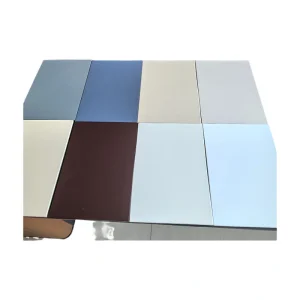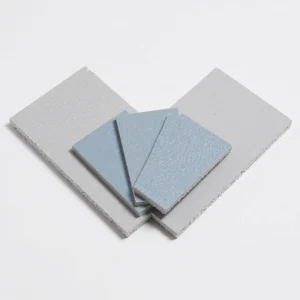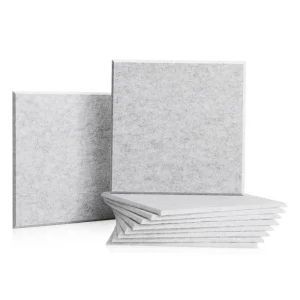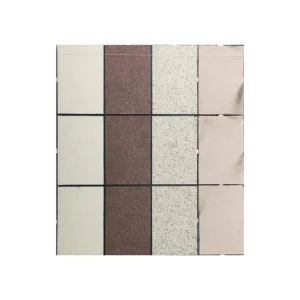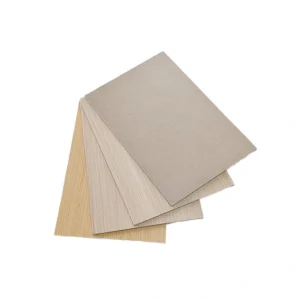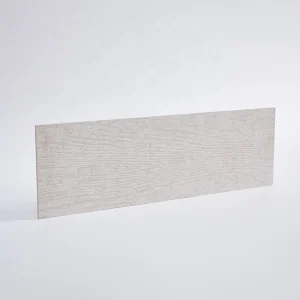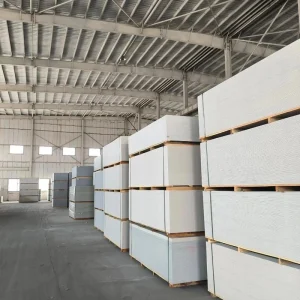1.Process Flow for Xonotlite Products
The general process for producing xonotlite (6CaO·6SiO2·H2O) placas de isolamento de silicato de cálcio são as seguintes: calcário é primeiro calcinado para produzir cal. Lima, pó de sílica cristalina, água, e aditivos (como oxicloreto de zircônio e nitrato de estrôncio) are then mixed and thoroughly combined. The xonotlite slurry is then prepared using an autoclave equipped with a stirrer. Fiber is then added, the mixture is molded using a steel mold, and then dried to produce the insulation product. The process flow for producing xonotlite insulation products using the dynamic hydrothermal method is shown in the figure.
To improve performance, amorphous silica powder can partially or even completely replace the crystalline silica powder. To increase production efficiency, the fiber-added xonotlite slurry can be vacuum-dehydrated and squeezed before being pressed into shape. Key control measures for the production of calcium silicate boards include the selection of calcium and silica raw materials, reaction temperature and time, and stirring speed.
2.Production of Calcium Raw Materials
To produce calcium silicate boards with excellent thermal insulation, xonotlite crystal fibers must be synthesized in a hydrothermal reaction and entangled to form hollow secondary spherical particles with chestnut-shell or spherical algae shapes. Portanto, the activity of the lime must be controlled. If the limestone is not completely decomposed during calcination, the slurry will not form xonotlite as intended. If the calcination is excessive, some of the dead-burned lime will not hydrate immediately, which will also affect the synthesis of xonotlite and the growth of chestnut-shell-shaped secondary spherical particles. The figure shows the hydration rate of lime calcined at different temperatures.
The figure shows that lime calcined at 900-950°C decomposes quickly and has high activity; lime burned at 1000°C decomposes slightly more slowly and has better activity; lime burned at 1050°C takes longer to decompose and has significantly lower activity. Because limestone decomposition is a highly endothermic reaction, and given the varying temperatures within the furnace, 20% of the CaCO₃ in limestone burned at 900°C remains undecomposed. Portanto, the optimal calcination temperature is approximately 1000°C.
3.Selection of Siliceous Raw Materials
Siliceous raw materials have a significant impact on the production and performance of xonotlite thermal insulation materials. The activity of the siliceous raw material determines the difficulty of the reaction and influences the morphology of the xonotlite crystals and secondary particles.
Research has shown that amorphous siliceous raw materials have higher activity, are easier to react, and require fewer process parameters. However, the resulting xonotlite is highly crystallized, resulting in shorter and thicker primary fibers and a difficulty in forming secondary chestnut-shell-shaped hollow spherical particles. After drying, the product has a high density. Crystalline siliceous materials have lower activity, are more difficult to react, and require higher process requirements. The resulting xonotlite primary fibrous particles are less crystallized, with slender, needle-like primary fibers that are more likely to entangle with each other to form secondary chestnut-shell-shaped hollow spherical particles. After drying, the density is low. Portanto, to reduce density, crystalline silica is selected as the raw material. The low reactivity of crystalline silica can be addressed by increasing the reaction temperature, extending the reaction time, and using chemical additives.



